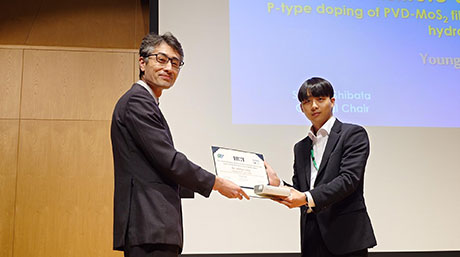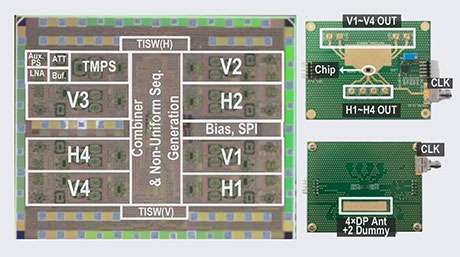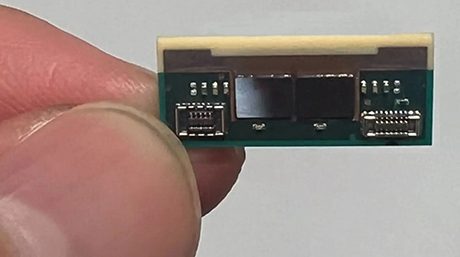Electrical and Electronic Engineering News
Interview with the 2020 Nikola Tesla award winner ―Dr. Akira Chiba―
Hey there! We are the EE Homepage supporters.
The Institute of Electrical and Electronics Engineering (IEEE) recently announced Professor Akira Chiba as the recipient of the Nikola Tesla Award for the year of 2020.
IEEE is one of the largest technical organizations in the fields of electrical and information engineering with more than 420,000 members worldwide. Meanwhile, the Nikola Tesla award is an award recognising outstanding contributions to the generation and utilization of electric power.
We heard from Prof. Chiba about his thoughts on the award.

The 2020 Nikola Tesla award winner, Dr. Akira Chiba
- Q:Dr. Chiba, congratulations on winning the Nikola Tesla Award! Let us know your thoughts.
- I was really surprised. I am so grateful. I didn’t expect to receive the award this early.
- Q:You received the Nikola Tesla award for your contributions to bearingless motors and reluctance motors. How did you start out researching motors?
- Actually, in my undergraduate days, my field of research was Power Electronics. It was more of research on how to use power devices to control voltage and current through switching. Specifically, I was researching on how to use AC-AC converters to change low frequencies of 50 Hz or 60 Hz to high frequencies of 500 Hz to 600 Hz. The reason why you want to do that is, when frequency is increased, the rotational speed of motors also increases. At that time, there were very few high-speed motors.
It was only in my Ph.D years that I started researching on generators, which was how I started my research on motors. And so I did research on motors, but there would always be trouble with the bearings of the motors once you went beyond (a rotational speed of) 15,000 rpm or more. We tried speeds of, say, 24,000 rpm or even 100,000 rpm and the bearings would fail. What happens when bearings fail is that you have to open up the motor and replace the bearings.
Let’s say you open up this pen and take out all the parts inside. When you put them back, they will all go right back in place. But with a motor, if you knock this side or that side, the components in the motor will go out of alignment. So, if your engineer is skilled, bearing replacement goes smoothly, but if like me, you’re not too good, bearing replacement will fail.
I thought, “This won’t do.” I thought it would be great if you could use an oscilloscope to check if the shaft was misaligned. What I came up with was, magnetic levitation. If you levitate the shaft and attach some sensors, you can see if the centre is aligned.
At the time, magnetic bearings were already out there, but I thought it would be boring to simply mimic magnetic bearings. One day, when I was doing the axis alignment of a motor, I left the current flowing. Normally, the motor shaft would rotate freely, but now it didn’t. When I cut the current, the shaft could rotate again. What I learnt from this was that, a significant force can be produced by current. I wanted to use this force for magnetic levitation.
However, when I brought this idea up to my professor, he told me, “Chiba, this is a really great idea. But I think that it’s better if you graduate first. Leave that for later”(laughs) I thought, maybe it is better to graduate first, so after I graduated, I happily started on my research on bearingless motors.
At first, the bearingless motor would not levitate, even after a year of research. It could levitate while stationary, but once it started to rotate it would fall down. Following that, within half a year we were able to make it levitate, but it was really a long journey to reach that point. Even after that, there were people who told us our research was interesting, but also people who went “Is there really a need to research this?”
- Q:What I read from IEEE’s homepage is that you are were a pioneer of bearingless motor technology.
- That’s right. At the time, there were two teams researching on bearingless motors: our team in Tokyo Tech and another team in ETH Zurich. They in their own way, and us in our own way, developed on the theory that we should make all motors bearingless. When we first met the Swiss team, we were so surprised, “Oh, they’re working on the same thing!”
When we subsequently met at academic conferences, it became a bit of a competition, “Oh, they’re doing something a little different!” They were more focused on creating companies and making a product of their technology. Whereas we were all about forming mathematical equations and mastering the control theory of motors(laughs) A little bit different, right?
- Q:Thank you for sharing about your research on bearingless motors! Lastly, please share some words of advice for the young engineers of this school.
- So when you present at an academic conference, you get asked questions. When I first presented on bearingless motors, I got asked a horrible question. “That motor will definitely be useless”, I was told. Ah.. that was the worst feeling ever. However, I’ve recently come to realise that that opinion was wrong. That’s why, you should research what you want to research and what you yourself find interesting no matter what anyone else tells you.
- IEEE Nikola Tesla Award Recipients|IEEE
- IEEE Nikola Tesla Award|IEEE
- IEEE
- Prof. Akira Chiba receives the IEEE Nikola Tesla Award (IEEE Field Award)|Tokyo Tech News
- Prof. Akira Chiba and Three Tokyo Tech Researchers Receive the IEEE Transactions on Energy Conversion Best Paper Award |Electrical and Electronic Engineering News
- Chiba Laboratory
- Researcher Profile | Tokyo Tech STAR Search - Akira Chiba
※3月18日 13:50 本文中に誤りがあったため、修正しました。





